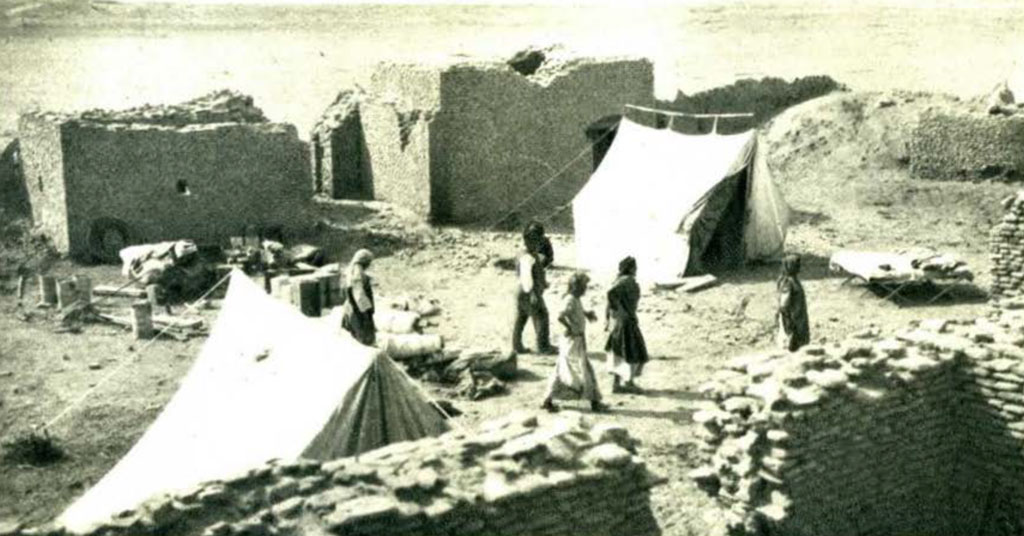AS announced in a recent issue of the Bulletin, work at Fara, in Mesopotamia, was started on February 15th under the direction of Dr. Erich Schmidt. It will be remembered that the mound of Fara has been identified as the site of the ancient Sumerian city of Shuruppak, the native town of Uta Napishtim, the Sumerian counterpart of Noah in the Flood stories. It has long been recognized as one of the oldest sites in Babylonia and gives promise of yielding interesting objects and important scientific data.
The first report from Dr. Schmidt, written after less than a fortnight’s work at the site [Plate V], states that already a rich find of tablets has been made in the first square investigated by the excavators, and that burials have been found with alabaster and pottery vessels apparently dating from the first half of the third millennium B.C. Since the present issue of the Bulletin is the last until the autumn, it is gratifying to be able to report the initial success of this new and interesting project.


